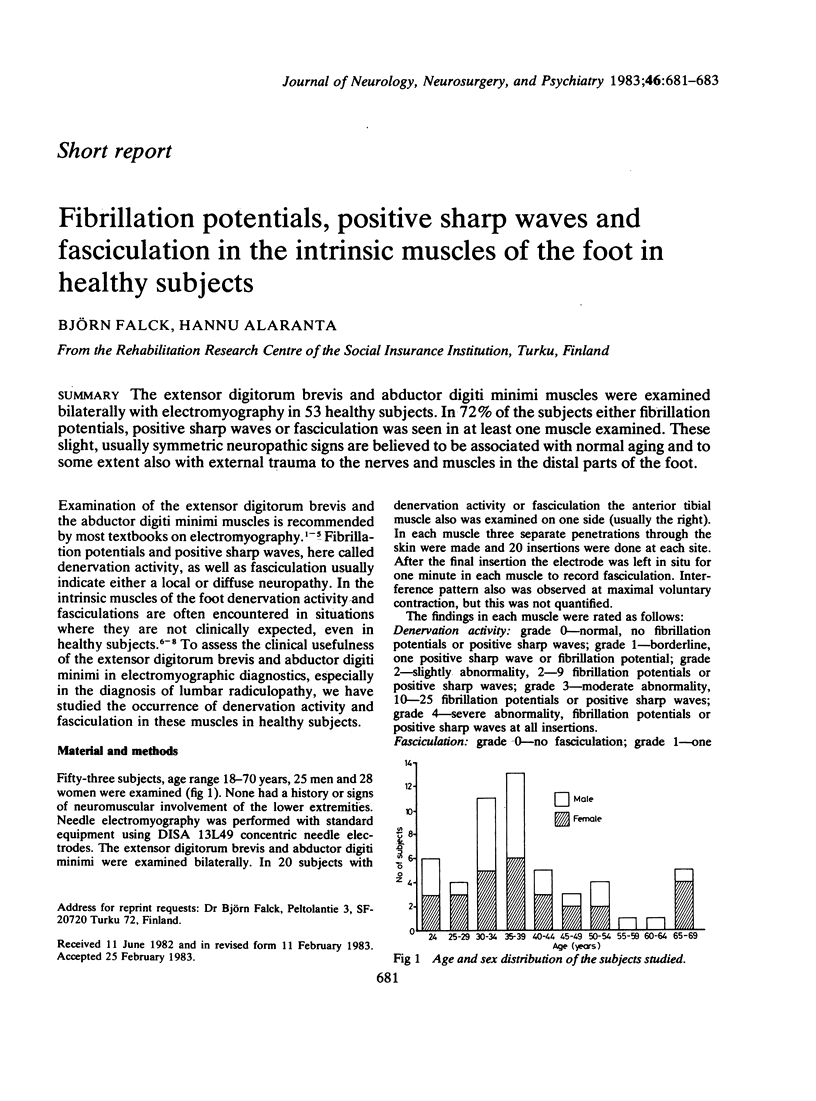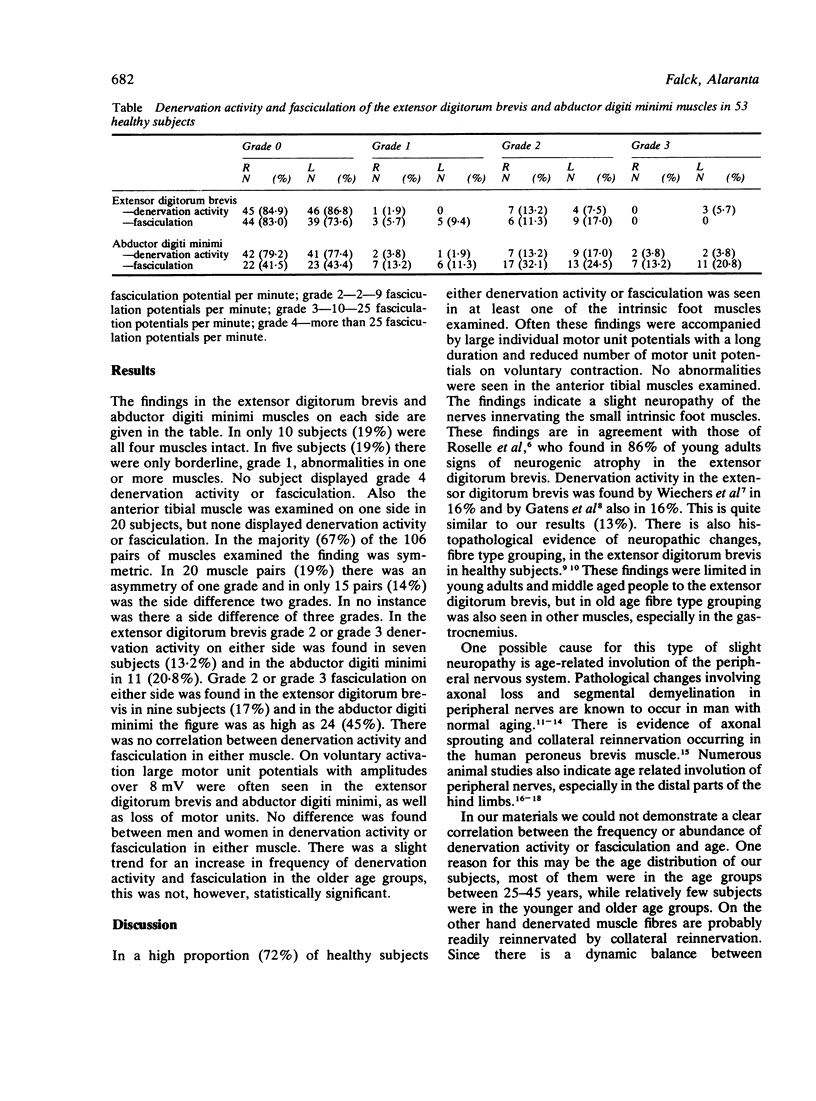Abstract
The extensor digitorum brevis and abductor digiti minimi muscles were examined bilaterally with electromyography in 53 healthy subjects. In 72% of the subjects either fibrillation potentials, positive sharp waves or fasciculation was seen in at least one muscle examined. These slight, usually symmetric neuropathic signs are believed to be associated with normal aging and to some extent also with external trauma to the nerves and muscles in the distal parts of the foot.
Full text
PDF


Selected References
These references are in PubMed. This may not be the complete list of references from this article.
- Gatens P. F., Saeed M. A. Electromyographic findings in the intrinsic muscles of normal feet. Arch Phys Med Rehabil. 1982 Jul;63(7):317–318. [PubMed] [Google Scholar]
- Grover-Johnson N., Spencer P. S. Peripheral nerve abnormalities in aging rats. J Neuropathol Exp Neurol. 1981 Mar;40(2):155–165. doi: 10.1097/00005072-198103000-00007. [DOI] [PubMed] [Google Scholar]
- Harriman D. G., Taverner D., Woolf A. L. Ekbom's syndrome and burning paraesthesiae. A biopsy study by vital staining and electron microscopy of the intramuscular innervation with a note on age changes in motor nerve endings in distal muscles. Brain. 1970;93(2):393–406. doi: 10.1093/brain/93.2.393. [DOI] [PubMed] [Google Scholar]
- Jennekens F. G., Tomlinson B. E., Walton J. N. Data on the distribution of fibre types in five human limb muscles. An autopsy study. J Neurol Sci. 1971 Nov;14(3):245–257. doi: 10.1016/0022-510x(71)90215-2. [DOI] [PubMed] [Google Scholar]
- Jennekens F. G., Tomlinson B. E., Walton J. N. Histochemical aspects of five limb muscles in old age. An autopsy study. J Neurol Sci. 1971 Nov;14(3):259–276. doi: 10.1016/0022-510x(71)90216-4. [DOI] [PubMed] [Google Scholar]
- Krause K. H., Witt T., Ross A. The anterior tarsal tunnel syndrome. J Neurol. 1977 Dec 1;217(1):67–74. doi: 10.1007/BF00316318. [DOI] [PubMed] [Google Scholar]
- Ochoa J., Mair W. G. The normal sural nerve in man. II. Changes in the axons and Schwann cells due to ageing. Acta Neuropathol. 1969;13(3):217–239. doi: 10.1007/BF00690643. [DOI] [PubMed] [Google Scholar]
- Sharma A. K., Bajada S., Thomas P. K. Age changes in the tibial and plantar nerves of the rat. J Anat. 1980 Mar;130(Pt 2):417–428. [PMC free article] [PubMed] [Google Scholar]
- Wiechers D., Guyton J. D., Johnson E. W. Electromyographic findings in the extensor digitorum brevis in a normal population. Arch Phys Med Rehabil. 1976 Feb;57(2):84–85. [PubMed] [Google Scholar]
- van Steenis G., Kroes R. Changes in the nervous system and musculature of old rats. Vet Pathol. 1971;8(4):320–332. doi: 10.1177/030098587100800404. [DOI] [PubMed] [Google Scholar]


